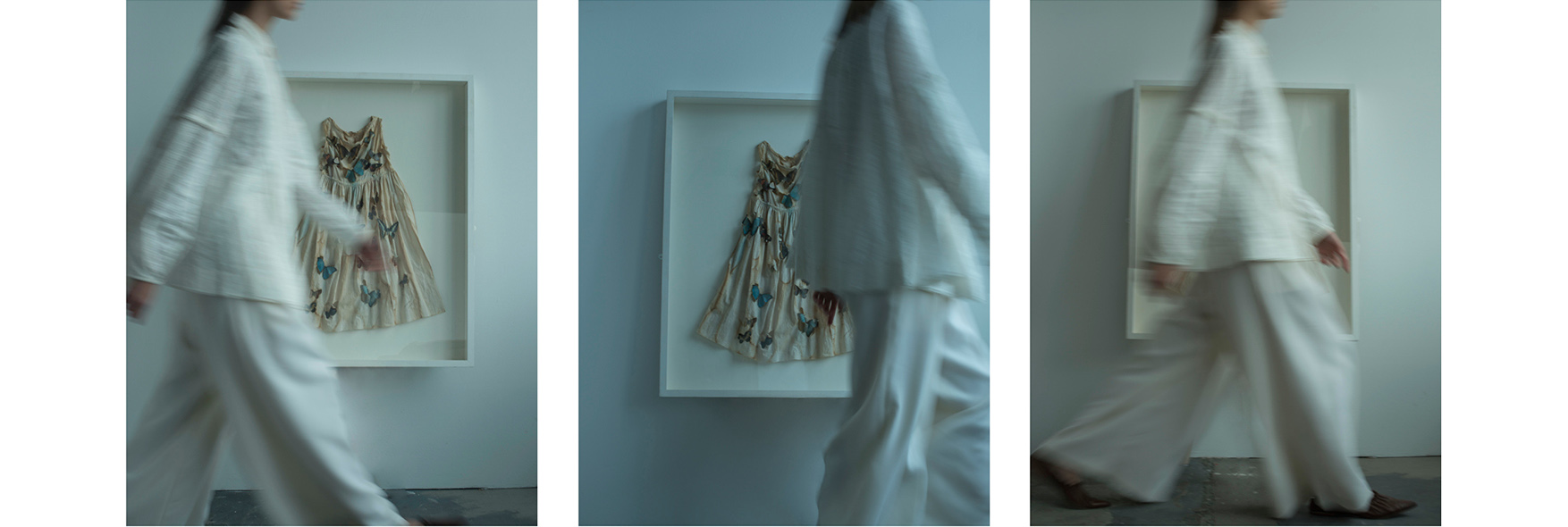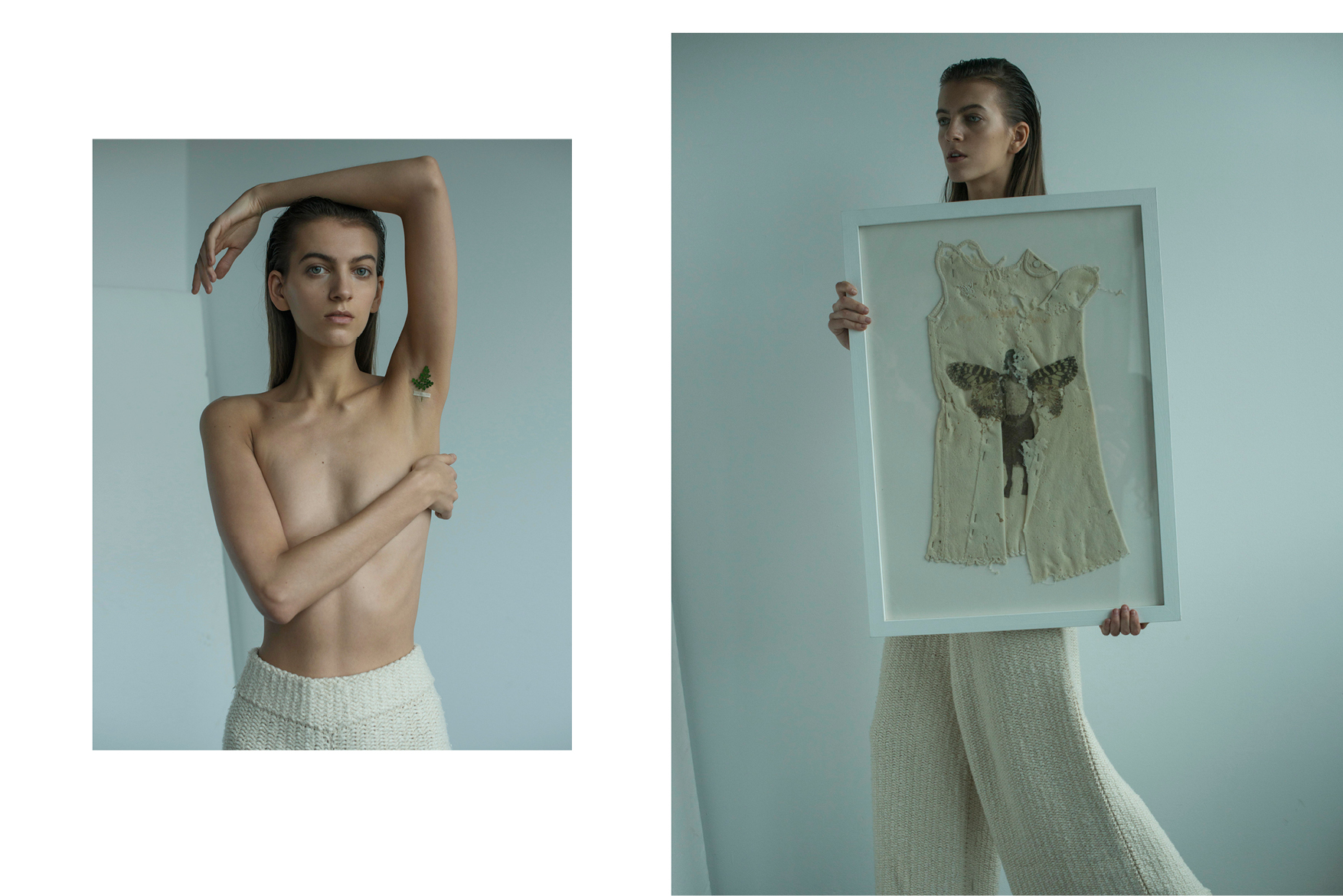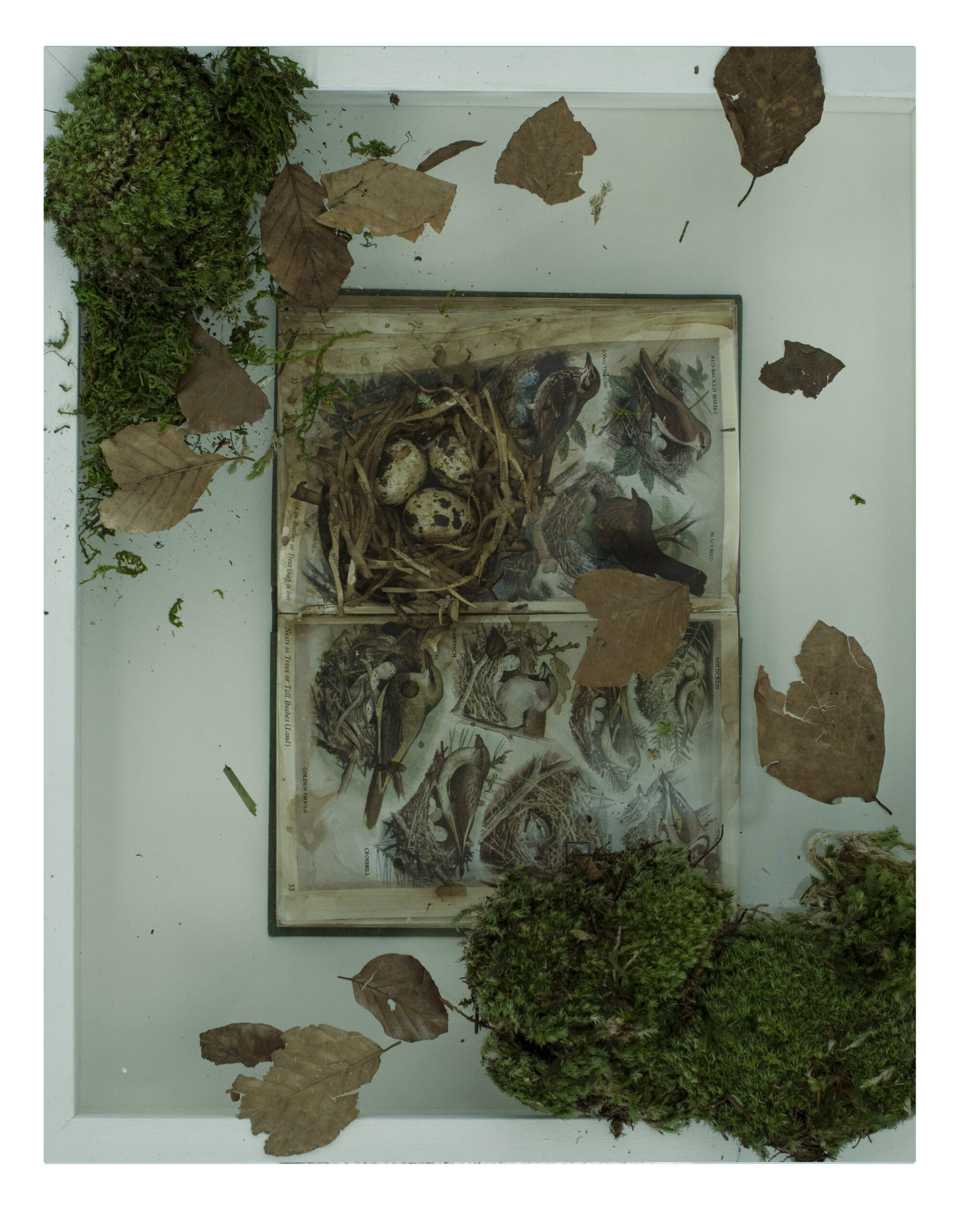Louise Richardson’s artworks exist in their own concept of time, reality and beauty, giving an aesthetic nod to Alice in Wonderland while masterfully piecing the natural progression of materials into a dainty construction of stories open to individual interpretation. Louise weaves a tapestry of mystical, feminine and dream-like reality, working with a fascinating range of materials, often discarded and elemental ones, such as rusty nails, dusty photographs or shed snakeskin, to name a few.
Her fragile pieces beautifully amalgamate decay and rebirth and the circular existence of each material included in her artwork. Through her work, we are invited to question our view on beauty and on the meaning of everyday objects – discarded ones that we have no use for anymore. The clothing pieces she constructs are not wearable. They are “unconsumable” other than through our senses, thus rendering their existence far from a disposable commodity.
Words and styling by Sophia Schwan, Photos by Anna Rosa Krau



“Hopefully, the time it takes to make transcends the piece and encourages the viewer to also take time to observe and make connections with the work, holding the viewer’s gaze.”
Sophia: You manage to extract time, moulding it into a surreal, textural and otherworldly creation that is rich with storytelling. From your clothing designs to mixed media pieces, each artwork can almost be read like a mid-century novel. What is your inspiration, your web of dreams?
Louise: The idea of telling stories is very important to me, taking everyday objects and creating tales. Within art, anything is possible: scale, materiality and time don’t matter, and animals and humans coexist on the same level. The diversity of materials within my work, both found and processed, give me the opportunity and freedom to invent metaphors, which run parallel with the subject matter.
It seems that you predominantly work with materials that have an expiration date or are already in the process of decay. Your artwork often appears as though it would crumble when touched, giving it this beautiful transience and natural feel. What kind of materials do you work with to create your delicate pieces?
The materials I use tend to be natural, elemental or found objects – they come with their own stories or inspire new ones. The clothes are often unwearable, physically too small, fragile or heavy, with materials ranging from nails, shed snake skins, dandelion clocks, razors shells, cobwebs and thorns. Often the objects and images are frail and transient, but by reinventing, combining, observing and retelling their tales gives them a new sense of life, place, preservation and resilience.
When it comes to your clothing designs, you create pieces for a female character ranging from child to adult. What kind of girl or woman do you envision when you are piecing your designs together?
I don’t tend to have a person in mind when making the pieces, allowing them space to tell their own stories; it’s like finding a discarded garment or shoe on the side of a path, not owned by anyone. This also allows for interpretation of the story and a connection with materials which are predominantly natural, involving and including the viewer in the dialogue, questioning the maker’s intention, interpretation of the wearer and how one would feel owning or wearing this garment. This aims to encourage storytelling and engagement with the pieces; I wouldn’t want the work to be too prescriptive.
A focal aspect of your exploration in art is identity. There are often very old portraits of individuals long gone woven into your stories, your clothing pieces. What do they symbolise? Who are they and how did you come across these images?
By using old and discarded photos I can remove the individuals from the now, the only connection and clue available is the image, and this disconnection allows for the retelling and the recreation of a new story, like the relighting of a candle. The photographs are often found in flea markets or charity shops and always unknown, although I like to have a connection with the image, a feeling there’s a story to be told.
What other topics play a pivotal role in your artwork?
I’m interested in the progression of time, not only as a theme within the work but as a process. The pieces often take time to create, for example, the nail dress which consists of approximately 13,000 nails individually placed and rusted, or the collection and preservation of the dandelion clocks to make ‘Thermal’. Hopefully, the time it takes to make transcends the piece and encourages the viewer to also take time to observe and make connections with the work, holding the viewer’s gaze.
How do you decide on a new project? How do you approach the various stages involved such as research, design and creation?
It often depends which story I want to tell or how an object, garment or photograph inspires. Fundamentally, I must be moved by something or someone and want to translate that into a piece of work, hopefully with integrity. The medium and way of expressing these ideas depend on the theme or object and how materials can underpin and reinforce the intention.
Your creative approach is diverse, ranging from fashion design to collage, to printing. What other forms do you utilise, and which one comes easiest to you?
Although the outcomes are often diverse, they all have common human connections, resulting in artworks that are in fact close to us in our everyday lives.
Thank you Louise!
Reference:
See more of Louise Richardson’s work here:
www.louiserichardsonartist.com
Team:
Photography:
Anna Rosa Krau
Creative Direction and Styling:
Sophia Schwan
Hair & Makeup:
Eva Dieckhoff
Model:
Ksenia Schneider @M4
Art Direction:
Dörte de Jesus
